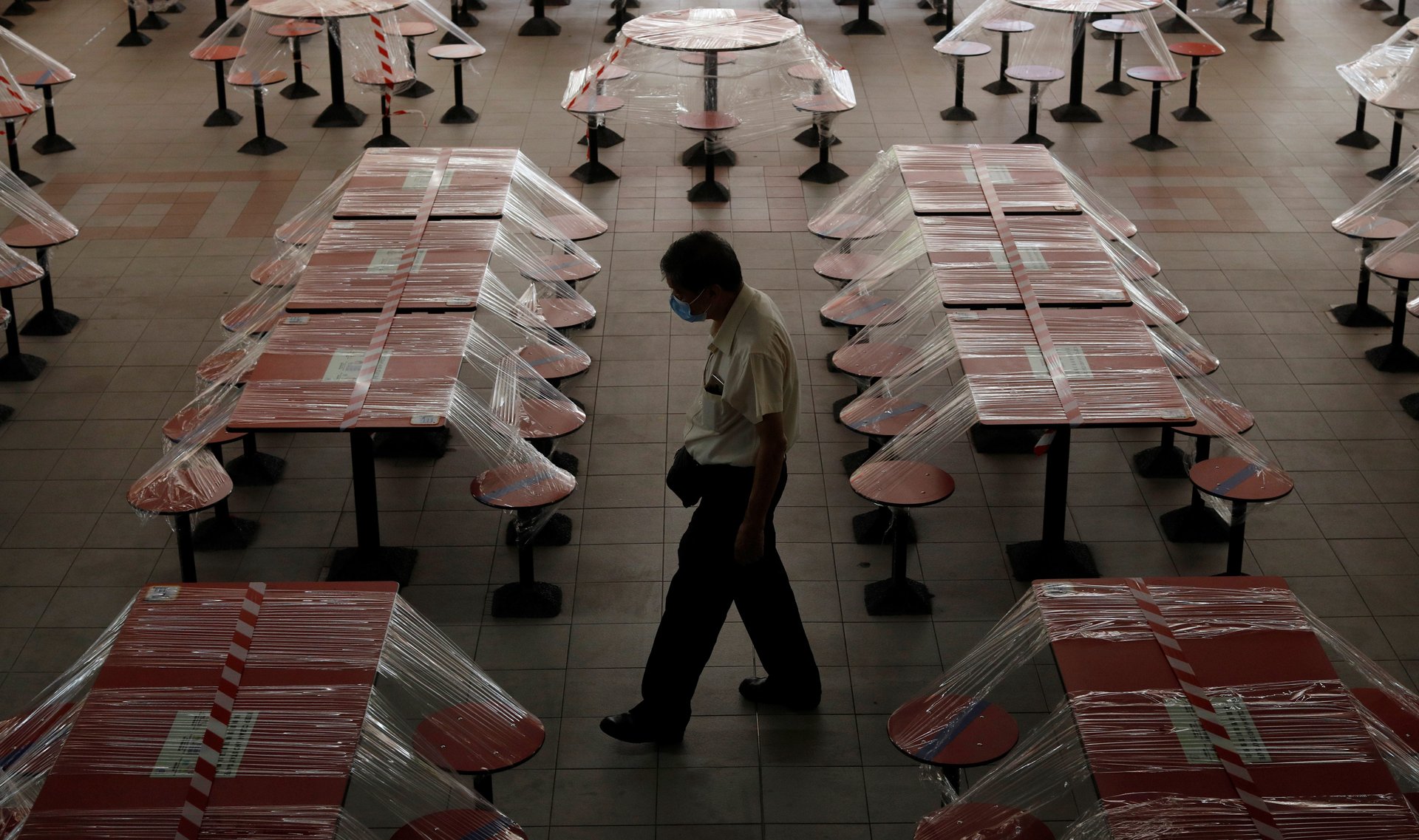Singapore wants all its citizens to download contact tracing apps to fight the coronavirus
As Singapore fights to control its rapidly spiralling number of confirmed Covid-19 cases—the latest total is now at 9,125, after 1,111 new cases were added yesterday— its prime minister has called on everyone to download contact tracing apps as the country puts technology at the center of its epidemic response methods.


As Singapore fights to control its rapidly spiralling number of confirmed Covid-19 cases—the latest total is now at 9,125, after 1,111 new cases were added yesterday— its prime minister has called on everyone to download contact tracing apps as the country puts technology at the center of its epidemic response methods.
“We will need to make full use of information technology, IT, so that when we discover Covid-19 cases, we can trace more efficiently where they have been, and whom they have been in contact with,” said Lee Hsien-loong in a national address, adding that the country was developing other apps in addition to the existing TraceTogether app. “For these apps to work, we will need everyone’s cooperation to install and use these apps, like what the South Koreans have done.”
For weeks, Singapore had managed to keep its case numbers relatively low through a timely campaign of travel restrictions, passenger screenings, fast contact tracing, stringent quarantine measures, and a comprehensive government messaging campaign. But cases began to grow rapidly earlier this month, after clusters were identified in cramped migrant worker dormitories. Of the 9,125 confirmed cases in Singapore, more than 78% (pdf) are foreign workers living in dormitories. The government announced a “circuit breaker” month on April 5 of ramped-up efforts to control the disease, and yesterday extended those measures for another month, until June 1.
Contact tracing refers to tracking down all those who have come into contact with an infected person, and is typically a very labor intensive endeavor. But thanks to the ubiquity of digital devices, technology can now play a much bigger role in the contact tracing process. Everything from GPS data and cellular signals from phones to credit card and other digital payments can now be compiled to quickly sketch out a detailed map of where someone has been and who they’ve crossed paths with. At least 29 countries are now using mobile data to help with contact tracing. South Korea is one country that has successfully leveraged contact tracing technologies (pdf), using the timeline feature of Google Maps to have citizens voluntarily record their locations, as well as drawing on data from credit card and telecommunications companies.
Singapore’s contact tracing app, TraceTogether, was launched on March 20 and claims to be the first national BlueTooth tracing solution in the world. It now boasts about 1.1 million users, just under one-fifth of the country’s population, and the government has made publicly available the app’s protocol. The app works by trading and logging unique identifying codes over BlueTooth signals of nearby phones with the app installed, and the data is accessed to identify close contacts when a user tests positive for the coronavirus. Critics, however, say that BlueTooth is flawed as a contact tracing technology because of its potential to turn up a large number false positives.
Data privacy is another major issue, and Lee acknowledged as much. “There will be some privacy concerns,” he said yesterday. “But we will have to weigh these against the benefits of being able to exit from the circuit breaker and stay open safely.”
Cryptographers are now working on contact tracing apps that better protect privacy. One such initiative is SafePaths, developed by researchers at the Massachusetts Institute of Technology. A major security risk with contact tracing apps is that a malicious hacker or a government wanting to violate the privacy of a user can still crack the anonymized location and time-stamped data, in a process known as “hash-cracking.” SafePaths is addressing that vulnerability by using two separate servers controlled by different organizations, according to Wired.